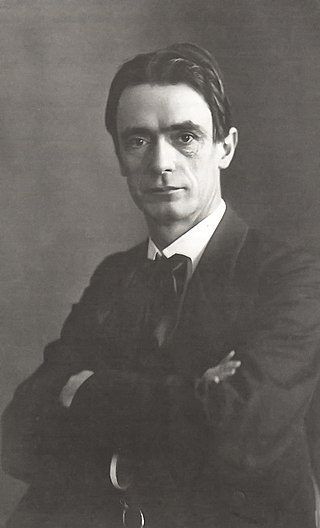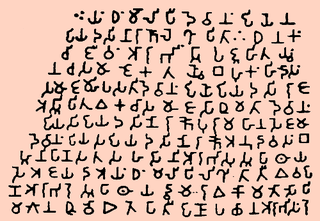
In the religion of Theosophy and the philosophical school called anthroposophy, the Akashic records are a compendium of all universal events, thoughts, words, emotions and intent ever to have occurred in the past, present, or future in terms of all entities and life forms, not just human. They are believed by theosophists to be encoded in a non-physical plane of existence known as the mental plane. Because it is believed that the records are encoded vibrationally into the inherent fabric of space, some have likened the mechanism as similar to how holograms are created. There is currently no scientific evidence for the existence of the Akashic records, and rigorous scientific research in this field has seen little traction.

The vertebrate cerebrum (brain) is formed by two cerebral hemispheres that are separated by a groove, the longitudinal fissure. The brain can thus be described as being divided into left and right cerebral hemispheres. Each of these hemispheres has an outer layer of grey matter, the cerebral cortex, that is supported by an inner layer of white matter. In eutherian (placental) mammals, the hemispheres are linked by the corpus callosum, a very large bundle of nerve fibers. Smaller commissures, including the anterior commissure, the posterior commissure and the fornix, also join the hemispheres and these are also present in other vertebrates. These commissures transfer information between the two hemispheres to coordinate localized functions.

The temporal lobe is one of the four major lobes of the cerebral cortex in the brain of mammals. The temporal lobe is located beneath the lateral fissure on both cerebral hemispheres of the mammalian brain.
Split-brain or callosal syndrome is a type of disconnection syndrome when the corpus callosum connecting the two hemispheres of the brain is severed to some degree. It is an association of symptoms produced by disruption of, or interference with, the connection between the hemispheres of the brain. The surgical operation to produce this condition involves transection of the corpus callosum, and is usually a last resort to treat refractory epilepsy. Initially, partial callosotomies are performed; if this operation does not succeed, a complete callosotomy is performed to mitigate the risk of accidental physical injury by reducing the severity and violence of epileptic seizures. Before using callosotomies, epilepsy is instead treated through pharmaceutical means. After surgery, neuropsychological assessments are often performed.
The term laterality refers to the preference most humans show for one side of their body over the other. Examples include left-handedness/right-handedness and left/right-footedness; it may also refer to the primary use of the left or right hemisphere in the brain. It may also apply to animals or plants. The majority of tests have been conducted on humans, specifically to determine the effects on language.

The planum temporale is the cortical area just posterior to the auditory cortex within the Sylvian fissure. It is a triangular region which forms the heart of Wernicke's area, one of the most important functional areas for language. Original studies on this area found that the planum temporale was one of the most asymmetric regions in the brain, with this area being up to ten times larger in the left cerebral hemisphere than the right.
Bicameral mentality is a hypothesis introduced by Julian Jaynes who argued human ancestors as late as the Ancient Greeks did not consider emotions and desires as stemming from their own minds but as the consequences of actions of gods external to themselves. The theory posits that the human mind once operated in a state in which cognitive functions were divided between one part of the brain which appears to be "speaking", and a second part which listens and obeys—a bicameral mind, and that the breakdown of this division gave rise to consciousness in humans. The term was coined by Jaynes who presented the idea in his 1976 book The Origin of Consciousness in the Breakdown of the Bicameral Mind, wherein he made the case that a bicameral mentality was the normal and ubiquitous state of the human mind as recently as 3,000 years ago, near the end of the Mediterranean bronze age.

The lateralization of brain function is the tendency for some neural functions or cognitive processes to be specialized to one side of the brain or the other. The median longitudinal fissure separates the human brain into two distinct cerebral hemispheres, connected by the corpus callosum. Although the macrostructure of the two hemispheres appears to be almost identical, different composition of neuronal networks allows for specialized function that is different in each hemisphere.
Matrikas (Sanskrit: मातृका (singular), IAST: mātṝkās, lit. "mothers") also called Matar or Matri, are a group of mother goddesses who are always depicted together in Hinduism. The Matrikas are often depicted in a group of seven, the Saptamatrika(s) (Seven Mothers). However, they are also depicted as a group of eight, the Ashtamatrika(s). In the Brihat Samhita, Varahamihira says that "Mothers are to be made with cognizance of (different major Hindu) gods corresponding to their names." They are associated with these gods as their spouses or their energies (Shaktis). Brahmani emerged from Brahma, Vaishnavi from Vishnu, Maheshvari from Shiva, Indrani from Indra, Kaumari from Kartikeya, Varahi from Varaha and Chamunda from Chandi. and additionals are Narasimhi from Narasimha and Vinayaki from Ganesha.
Leonard Shlain was an American surgeon, author, and inventor. He was chairperson of laparoscopic surgery at the California Pacific Medical Center in San Francisco, and was an associate professor of surgery at University of California, San Francisco.
The alphabet effect is a group of hypotheses in communication theory arguing that phonetic writing, and alphabetic scripts in particular, have served to promote and encourage the cognitive skills of abstraction, analysis, coding, decoding, and classification. Promoters of these hypotheses are associated with the Toronto School of Communication, such as Marshall McLuhan, Harold Innis, Walter Ong, Vilém Flusser and more recently Robert K. Logan; the term "alphabet effect" comes from Logan's 1986 work.

Siddhaṃ, also known in its later evolved form as Siddhamātṛkā, is a medieval Brahmic abugida, derived from the Gupta script and ancestral to the Nāgarī, Assamese, Bengali, Tirhuta, Odia and Nepalese scripts.
Emotional lateralization is the asymmetrical representation of emotional control and processing in the brain. There is evidence for the lateralization of other brain functions as well.
Dichotic listening is a psychological test commonly used to investigate selective attention and the lateralization of brain function within the auditory system. It is used within the fields of cognitive psychology and neuroscience.

The left-brain interpreter is a neuropsychological concept developed by the psychologist Michael S. Gazzaniga and the neuroscientist Joseph E. LeDoux. It refers to the construction of explanations by the left brain hemisphere in order to make sense of the world by reconciling new information with what was known before. The left-brain interpreter attempts to rationalize, reason and generalize new information it receives in order to relate the past to the present.
Sign language refers to any natural language which uses visual gestures produced by the hands and body language to express meaning. The brain's left side is the dominant side utilized for producing and understanding sign language, just as it is for speech. In 1861, Paul Broca studied patients with the ability to understand spoken languages but the inability to produce them. The damaged area was named Broca's area, and located in the left hemisphere’s inferior frontal gyrus. Soon after, in 1874, Carl Wernicke studied patients with the reverse deficits: patients could produce spoken language, but could not comprehend it. The damaged area was named Wernicke's area, and is located in the left hemisphere’s posterior superior temporal gyrus.

The Divided Visual Field Paradigm is an experimental technique that involves measuring task performance when visual stimuli are presented on the left or right visual hemifields. If a visual stimulus appears in the left visual field (LVF), the visual information is initially projected to the right cerebral hemisphere (RH), and conversely, if a visual stimulus appears in the right visual field (RVF), the visual information is initially received by the left cerebral hemisphere (LH). In this way, if a cerebral hemisphere has functional advantages with some aspect of a particular task, an experimenter might observe improvements in task performance when the visual information is presented on the contralateral visual field.

Lipi means 'writing, letters, alphabet', and contextually refers to scripts, the art or manner of writing, or in modified form such as lipī (लिपी) to painting, decorating or anointing a surface to express something.
The Russian Religion, also termed Russian Vedism, is one of the earliest doctrines of Rodnovery in Russia, founded in 1992 in Saint Petersburg by the psychologist and esoteric scientist Viktor Mikhaylovich Kandyba — revered as "Prophet Kandyba" within the movement — and his son Dimitry Viktorovich Kandyba. It is a monotheism based on Slavic heritage, and as such it has been compared to Ukrainian Sylenkoism. The concept of "Russian" in the name "Russian Religion" does not identify an ethnic identity, but a spiritual one, being used as a synonym of the concept of "Aryan".

Of Two Minds: The Revolutionary Science of Dual-Brain Psychology is a book written by the American psychiatrist Fredric Schiffer wherein he proposes that each person behaves as if there are two minds within the person, and that by recognizing and relating to the two separate minds, the therapist can promote healing and understanding of problems such as depression, anxiety, addictive behavior and delusional thoughts. The author writes that by "two minds in one person" he means that a "part of an individual ...has a unique set of memories, motivations, and behaviors alongside another part of him which has a different unique set of memories, motivations and behaviors." The author locates a "mind" in each of the two physical halves (hemispheres) of the brain. and he "maintains that one hemisphere can be more immature than the other and that this imbalance leads to different mental disorders." During his counseling, as an exercise he has his patients cover all of one eye, and the inner half of the other eye, which the author feels selectively stimulates one cerebral hemisphere more than the other – activating the thoughts and feelings of that hemisphere – which allows one to "'talk' to each half of the brain separately, to learn which is less mature, and to bring the two hemispheres into harmony."










